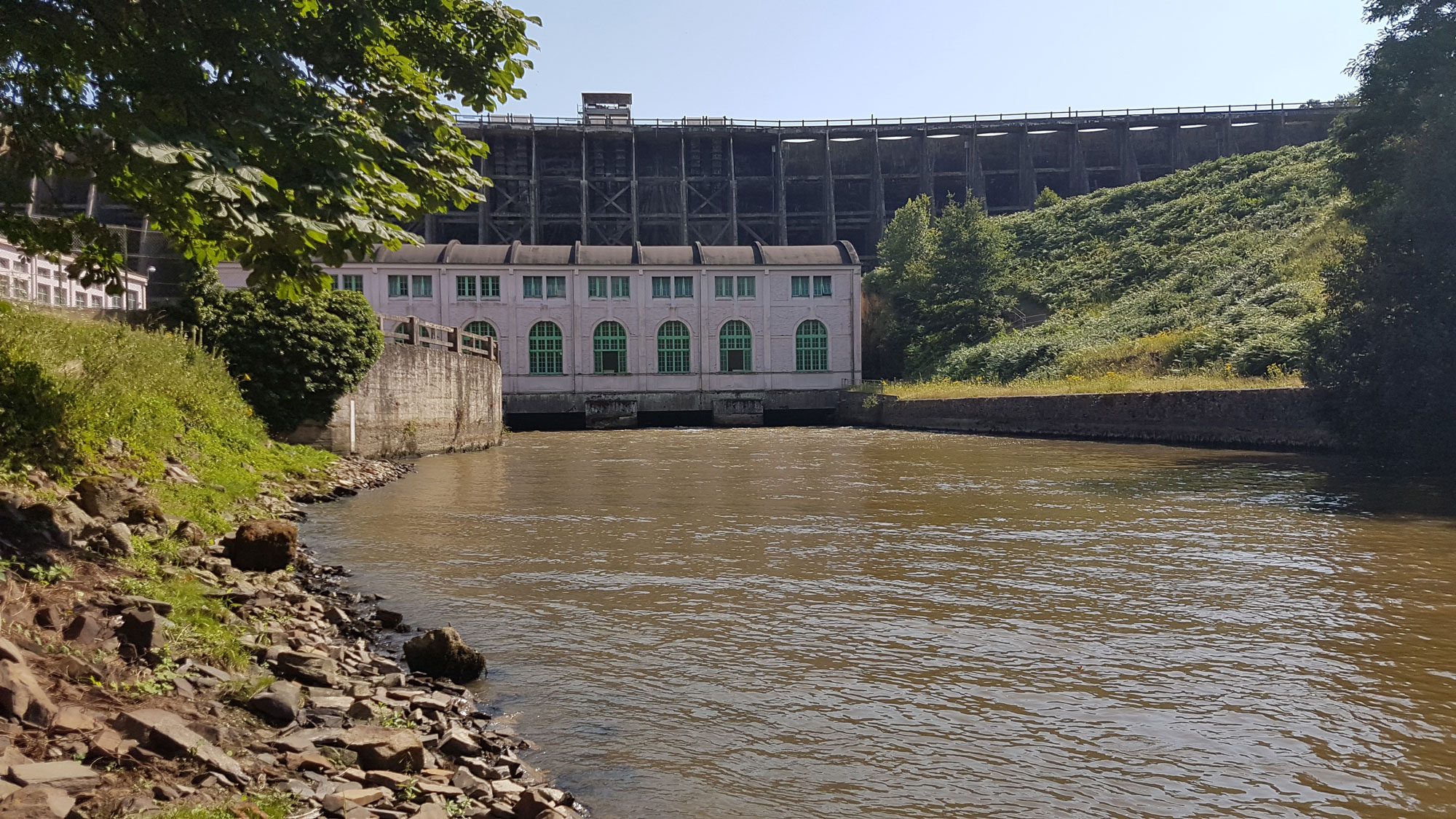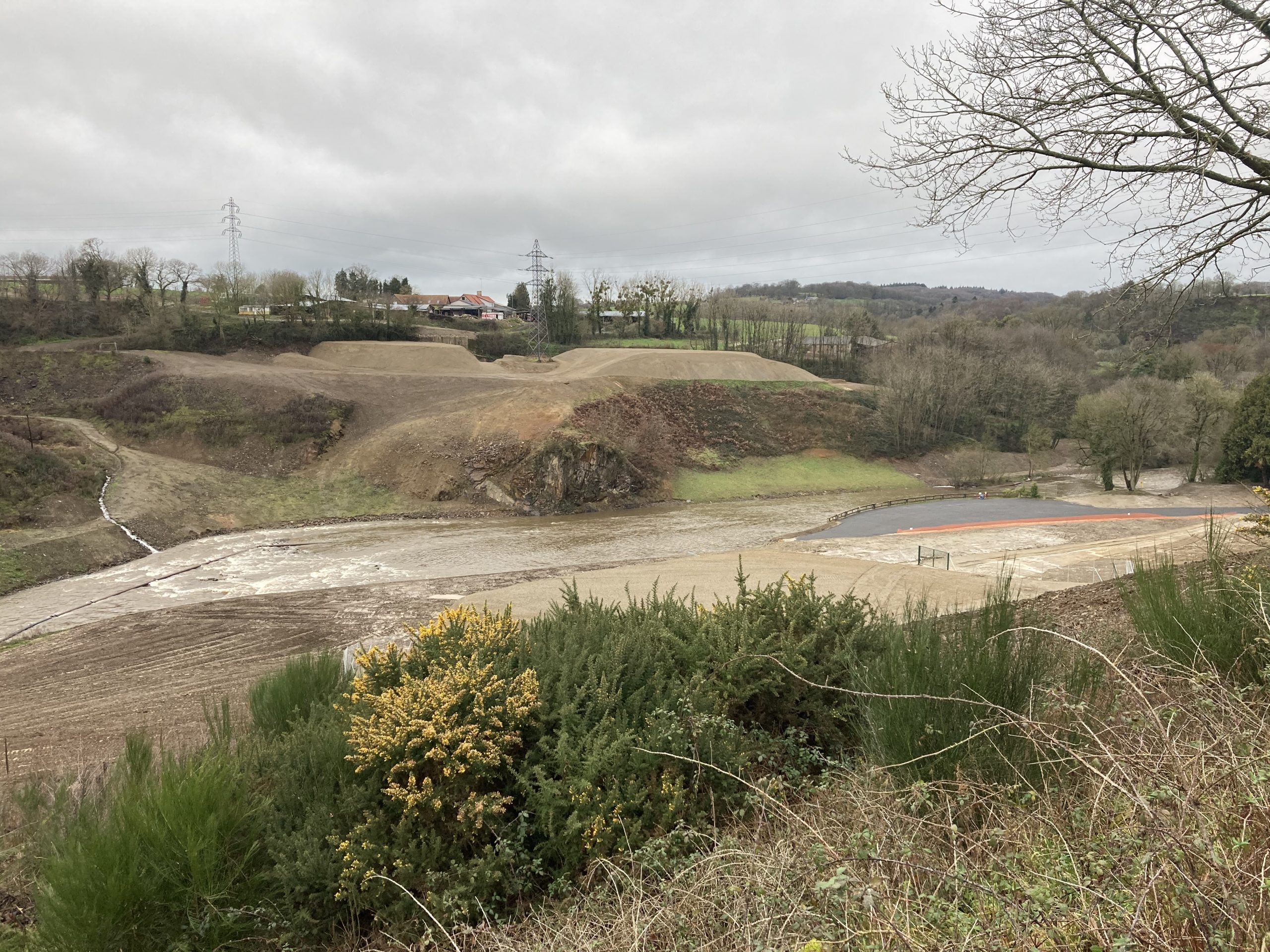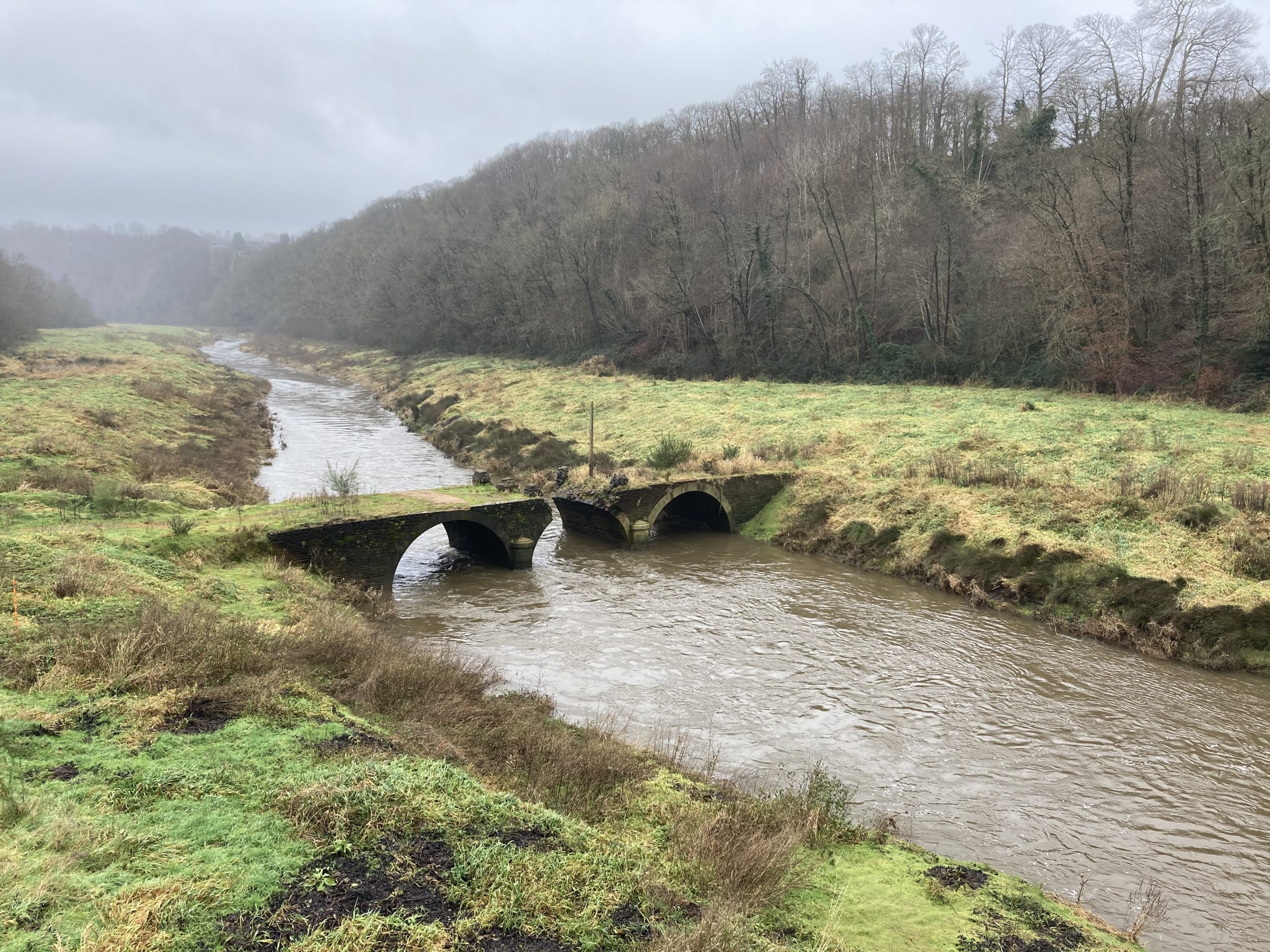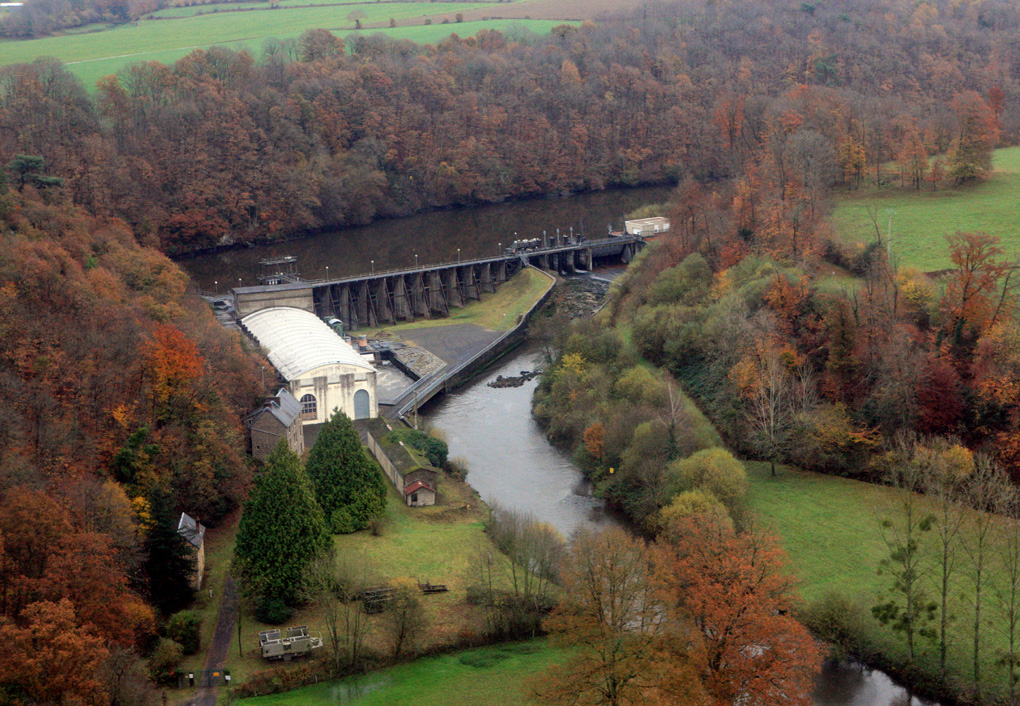Vezins Dam © Iwan Hoving – WFMF

The Vezins and La Roche Qui Boit hydroelectric dams, located in the Sélune River (Normandy, France), have been operating since the 1920s and 1930s. However, now their reservoirs are filled with sediment, generate low profits and, in the summer, host toxic cyanobacteria. For these reasons and the risk of sanctions from the Water Framework Directive, the French government officially agreed in November of 2017 to remove the 36m high Vezins and 16m high La Roche Qui Boit dams from the Sélune River in Normandy starting in the spring of 2019. (Source: https://programme-selune.com/programme-selune-eng/the-program)
- Name: Vezins Dam
- Location: Normandy, France
- Type of dam: Concrete
- Measurements: 36m high
- Aim of removal: As part of a larger project to open up the entirety of the Selune River
- Year of removal: 2019

”The dismantling of these ancient dams after almost 100 years of hydropower generation is a landmark in Europe’s attitudes to its rivers and energy production
Roberto Epple, Founder and President of the European Rivers Network (ERN)
“Removing these obstacles will help rewild the entire 90 kms of the Sélune, allowing fish to migrate and sediment to flow and rapidly boosting the river’s biodiversity.” (Press Release of the news back in Nov 2017)
The process started back in 2009 when the government decided not to renew the license of these two hydroelectric dams. To learn about the various aspects of dam removal projects, an interdisciplinary research project under coordination of the INRAE was set up. This research program will run from 2012 until 2027 and will be organized into three main themes (https://programme-selune.com/en/the-program/program-schedule/):
- The dynamics of the territory and its trajectories. Central questions: How do inhabitants, valley, river and lakes’ users see the ecological restoration project of the Sélune River? Which criteria are decisive for its success? Which changes can be expected for agriculture and landscapes?
- River dynamics and water quality. Central questions: What impact will dismantling dams have on water, sediments, and chemical flows? Will the Sélune River’s geomorphology and shape change?
- Biocenosis, their functioning and evolution. Central questions: What is the impact of a dam’s removal on river and riverbank ecosystems? How are animals and plants, aquatic or terrestrial, going to reorganize themselves?
Researchers are monitoring the ecological restoration of the Selune valley, in order to characterize the physical, chemical and biological processes involved and to support the societal changes that will take place. This program is a collaboration between approximately 100 scientists from 20 different research laboratories and is structured in three phases:
- 2012-2018: the pre-removal phase (preliminary assessments and evaluation of reservoir draining) and
- 2019-2022: the removal phase (direct assessment of the removal and anticipation of the changes that may occur)
- 2022 – 2027: the post-removal phase (ecological restoration)
As with any new endeavour, there are always learnt experiences to take away and incorporate into the next project. In this case, the participation of the local community is of interest. Although removal is underway, there is still strong local opposition to removing the dam. Community members wanted to keep the reservoir that the dam created and expressed that they weren’t sufficiently involved in the planning and proceeding of the project.
Although some communication efforts were made by the project organizers, the locals still did not feel they were part of the process. Would local opinions have been different if more efforts were done to facilitate communication and acknowledge their concerns? Would a designated person liaising with affiliated parties have made a difference? To find answers to these questions and learn for future projects, research exploring these particular issues is still underway as part of the Selune River scientific program.

Sign of people opposed to the dam removal: For money, 5 elected officials demanded the destruction of our dam! Treason! What a shame, we will not let go!
Vezins dam during removal phase (removal started May 2019 – finished July 2020).
Updates
Update 22-4-2021
”This would mean that the salmon should be able to swim freely to the upstream area of the Selune over the winter!
Laura Soissons, Coordinator of the Selune scientific program, INRAE
Vezins dam
The Vezins dam and its last remaining structures have now been removed completely. The demolition was completed in the winter of 2020. While the river is slowly returning to its original course, vegetation is gradually recolonizing the banks that were reworked throughout the old reservoir. The pictures below, taken at the beginning of 2021, show the complete removal of the Vezins dam and the pioneering vegetation on the river banks upstream.


January 14th, 2021. The riverbanks at the “Pont de la République” located upstream at the tail of the old reservoir, are covered in vegetation again. As the water level was lowered, this historic bridge appeared at the surface. © Laura Soissons – INRAE
La Roche qui Boit dam
The first steps to decommission the La-Roche-Qui-Boit dam were already taken in 2020 and will continue soon. The objective is to start lowering the water level in the reservoir by the end of this summer. Work on the sediment in the reservoir will be done in the fall. After that, the first breaches and the opening of the dam will be done during the same period. This would mean that the salmon should be able to swim freely to the upstream area of the Selune over the winter! Further demolition activities of the dam are planned to be completed by the end of 2022.
Many thanks to Laura Soissons, Coordinator of the Selune scientific program, for sharing updates and pictures.

The La-Roche-Qui-Boit dam. © Andre Berne
More info
Dam Removal Europe and partners organised the “Selune Valley revival” International Seminar on dam removal in France. Read the full report of this seminar here.
To follow the progress of this dam removal research and to get more details about the dams, you can visit the project website.
Also, you can find the scientific papers and news of the project in ResearchGate:
BBC Radio made a special program about these two dam removals this past July 2018.
Watch the video below for more information on the Vezins dam.
Barrages de Vezins et de Poutès : deux projets exemplaires de restauration de la continuité from onema on Vimeo.
For a detailed plan of the removal of the Vezins and La Roche qui Boit dam, visit the website of Electricité de France (French)

